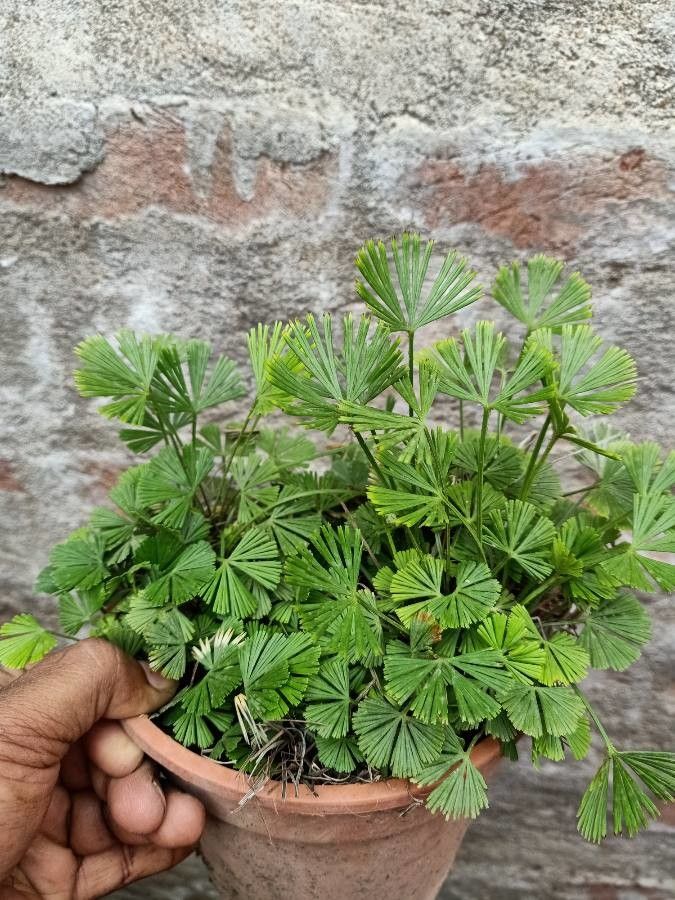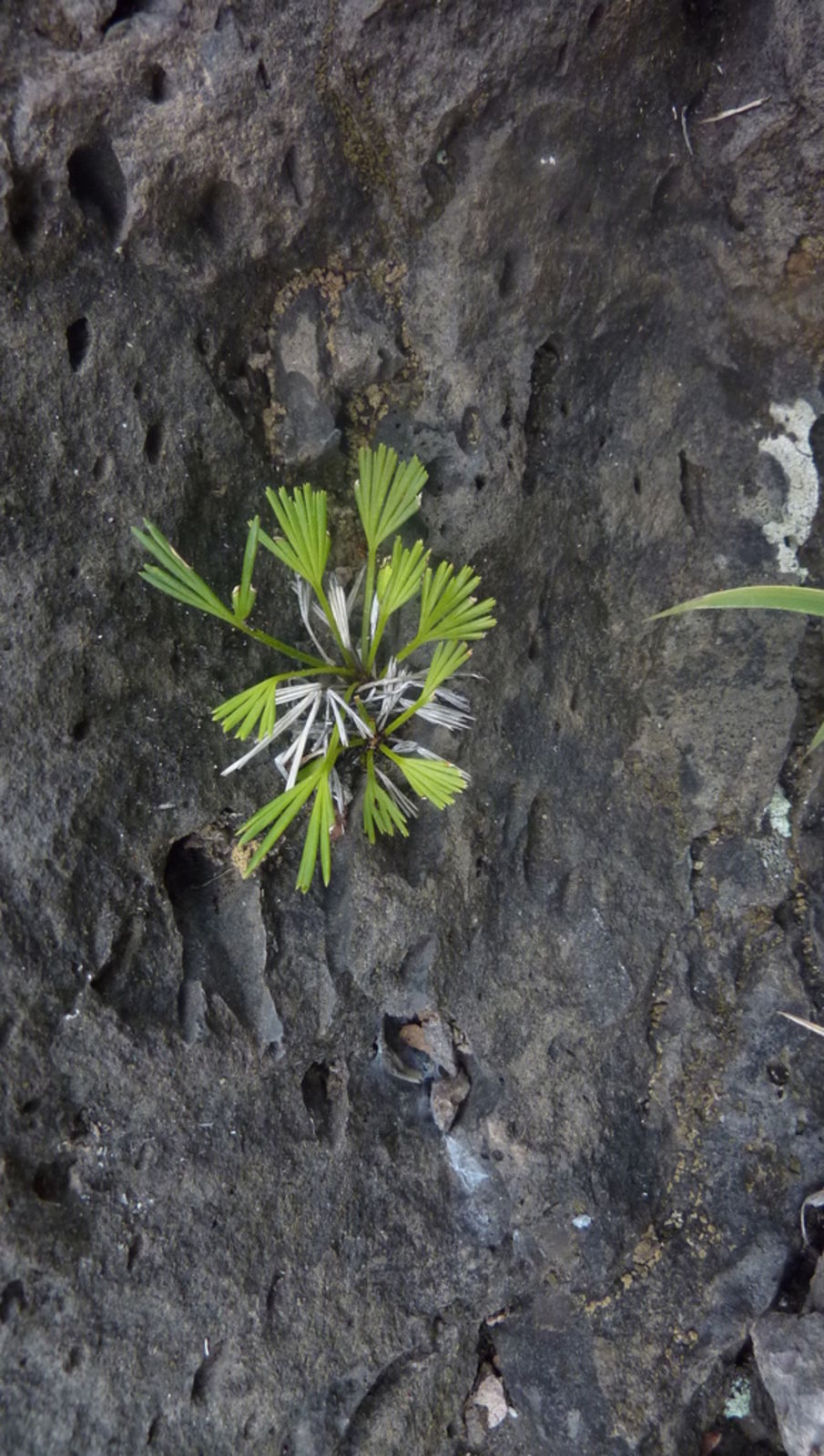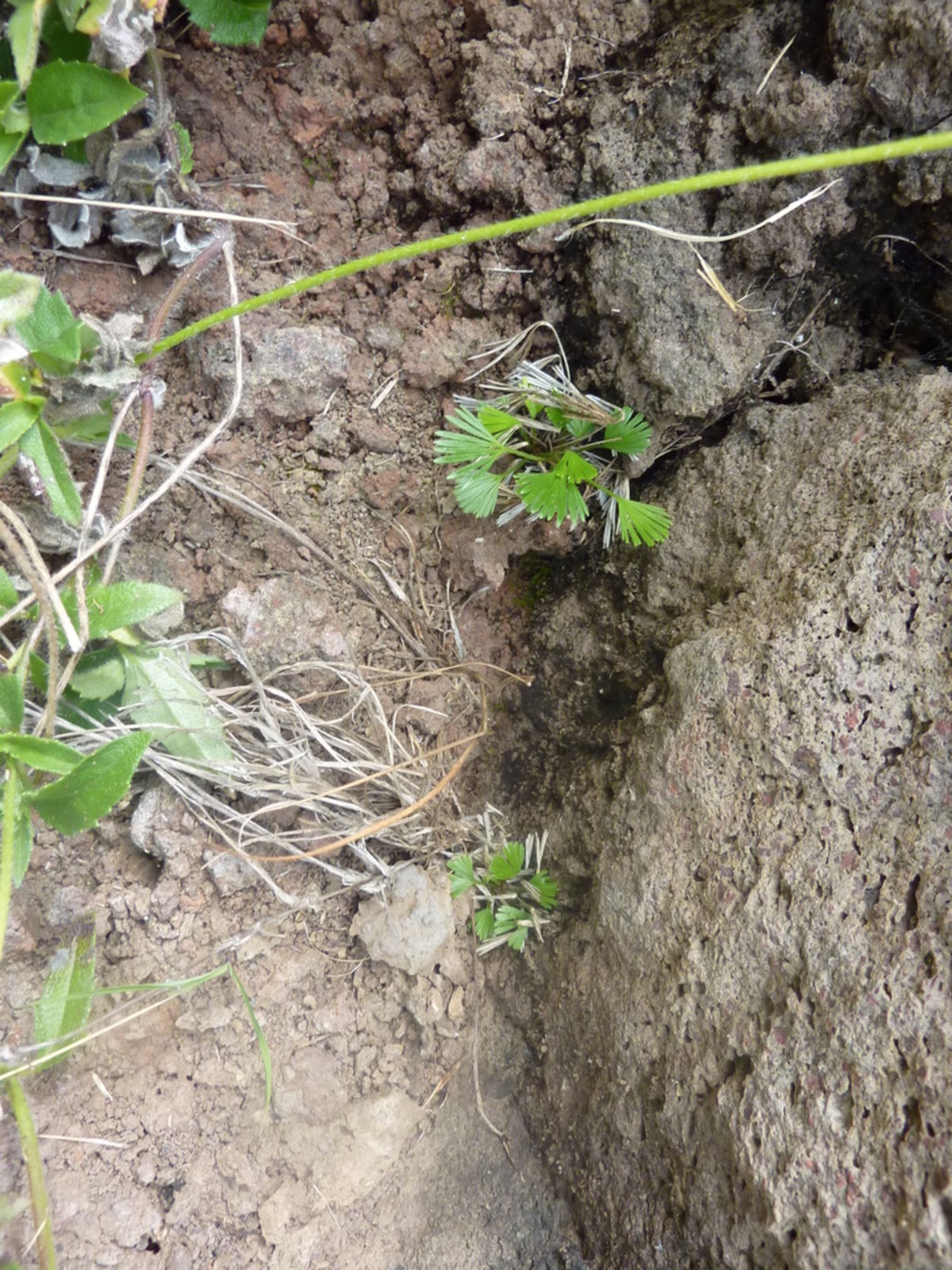unknown
actiniopteris semiflabellata
Also known as: []
Overview
A species of fern in the family Pteridaceae, native to arid regions.
Benefits & Perks
["shade tolerant","drought tolerant","wildlife attractant (bees, butterflies, birds)"]
Botanical Classification
| Phylum: | Tracheophyta |
| Class: | Polypodiopsida |
| Order: | Pteridales |
| Family: | Pteridaceae |
| Genus: | Actiniopteris |
| Botanical Name: | Actiniopteris semiflabellata |
Plant Characteristics
Basic Information
- Category: Leaf Plants
- Suitable Location: shady rock garden or container in a protected spot
- Suitable For:
- Is Weed: No
- Allergenicity: low
Environmental Needs
- Climate: {"temperatureRange":"10–30°C"}
- Hardiness: {"zones":"9–11"}
- Misting: rarely required, only if ambient humidity is very low
- Drainage: Fast-draining to prevent waterlogging.
- Soil Type: Well-draining, slightly acidic soil mix with organic matter (e.g., peat moss, perlite, and sand).
Maintenance Level
- Maintenance Level: moderate
- Toughness Level: moderate
- Pruning Frequency: As needed, typically every few months or after flowering.
- Pruning Intensity: Light to moderate; remove only dead or yellowing fronds unless significant overgrowth occurs.
Care Details
Ideal Sunlight Coverage:
Bright indirect light for 4–6 hours daily; tolerate some direct morning sun but avoid harsh afternoon sun.
Sunlight Tolerance Tips:
Acclimate gradually to brighter light; protect from intense direct sun to prevent scorching; adjust placement based on indoor/outdoor conditions.
Care Requirements
Care Difficulty
moderatemoderate
Sunlight
bright, indirect light or partial shade
Rotate plant for even light exposure; use sheer curtains to filter harsh sunlight; avoid placing near hot windows.
Watering
every 7–10 days during active growth, reduce in winter
Water thoroughly but infrequently; ensure proper drainage; adjust based on season and growth phase.
Soil
well-draining, sandy loam with some organic matter
pH: 5.5–6.5 (slightly acidic).
Use a mix of peat, perlite, and sand; avoid heavy clay soils; ensure pots have drainage holes.
Temperature
Prefers 18–24°C (64–75°F); tolerates a range of 10–30°C (50–86°F) but thrives in moderate warmth.
Avoid sudden temperature fluctuations; protect from drafts; maintain moderate humidity.
Fertilizing
every 4–6 weeks during growing season with balanced liquid fertilizer
Dilute fertilizer to prevent burn; fertilize during active growth; flush soil occasionally to prevent salt buildup.
Propagation
Methods
Spores or division of rhizomes.
Step-by-Step Propagation Guide
- Collect spores.
- Prepare medium.
- Scatter spores.
- Keep moist.
- Or divide rhizomes.
- Replant in fresh soil.
Best Time: Spring or early summer when the plant is actively growing.
Environment
High humidity (70–90%); warm temperatures (20–25°C or 68–77°F); indirect light.
Medium
Mixture of peat moss and perlite; kept consistently moist but not waterlogged.
Hormone
Not required for spore propagation; rooting hormone may aid rhizome division.
Timeline
Spores may take 1–3 months to germinate; rhizome division roots in 2–4 weeks.
Tools Needed
Spore collection kit, sharp knife, rooting hormone (optional), humidity dome, sterile soil.
Quick Tips
Use sterile tools to prevent disease; maintain high humidity for spores; divide rhizomes carefully to avoid damage.
Pruning & Repotting
Pruning Guide
Method
Cut fronds at the base with clean, sharp tools; avoid cutting into healthy growth.
Pruning Plan
Remove dead or damaged fronds to maintain appearance and health; encourage new growth.
Tools
Pruning shears, scissors, or a sharp knife.
Checklist
Identify dead/damaged fronds; use clean tools; cut at the base; dispose of clippings.
Repotting Guide
Best Season
Spring, before the active growing season begins.
Pot Size
Choose a pot one size larger (1–2 inches wider) than the current one.
Method
Remove plant gently; trim roots if necessary; place in a new pot with fresh soil; water lightly.
Suggestions
Repot every 2–3 years or when roots fill the pot; beneficial for growth and soil refreshment.
Checklist
Prepare new pot with drainage; gently remove plant; trim roots if needed; add fresh soil; water lightly.
Advanced Care Tips
Watering Mastery
Watering Checklist
Check soil moisture; water thoroughly; ensure drainage; adjust seasonally.
How to Apply Water Properly
Water directly at the root zone until water drains from the bottom; avoid wetting the fronds; water in the morning to allow foliage to dry.
Watering Schedule Tips
Water moderately during active growth (spring/summer), allowing soil to dry slightly between waterings; reduce frequency in winter to prevent root rot.
Soil Improvement
Add perlite or sand for drainage; incorporate organic matter for fertility; ensure aeration by mixing components well.
Temperature Stress Management
Signs of Temperature Issues
Yellowing or browning fronds; stunted growth; bud drop; wilting.
Cold Stress
Slows growth; may cause fronds to turn brown or black; increases susceptibility to root rot.
Solution: Move to a warmer location; insulate pots; avoid overwatering in cold conditions.
Hot Stress
Wilting; leaf scorch; reduced vigor; may drop fronds to conserve energy.
Solution: Provide shade; increase humidity; water more frequently but ensure drainage; avoid placing near heat sources.
Fertilizing Guide
Fertilizing Checklist
Use diluted fertilizer; apply during growing season; avoid winter feeding; flush soil periodically.
Fertilizing Method
Use a balanced liquid fertilizer diluted to half strength every 4–6 weeks during spring and summer; avoid fertilizing in fall and winter.
Common Problems & Solutions
Toxicity Warning
Cats
Non-toxicActiniopteris semiflabellata is not known to be toxic to cats. The plant poses no significant health risks if ingested or handled by felines.
⚡ Toxic If:
None
Dogs
Non-toxicActiniopteris semiflabellata is not known to be toxic to dogs. The plant poses no significant health risks if ingested or handled by canines.
⚡ Toxic If:
None
Humans
Non-toxicActiniopteris semiflabellata is not known to exhibit any toxic properties to humans. The plant is generally considered safe for handling and consumption.
⚡ Toxic If:
None
Frequently Asked Questions
Q: Is Actiniopteris semiflabellata toxic to pets?
A: No, it is non-toxic to dogs and cats.
Q: What are the care requirements for this plant?
A: It requires moderate care, including partial shade and drought tolerance.
Q: Does this plant attract wildlife?
A: Yes, it can attract bees, butterflies, and birds.
Quick Reference
| Family: | Pteridaceae |
| Care: | moderate |
| Light: | bright, indirect light or part |
| Water: | every 7–10 days during activ |
Get Expert Care Tips
Download the Plantious app for personalized care reminders and plant identification!
Google Play App Store








